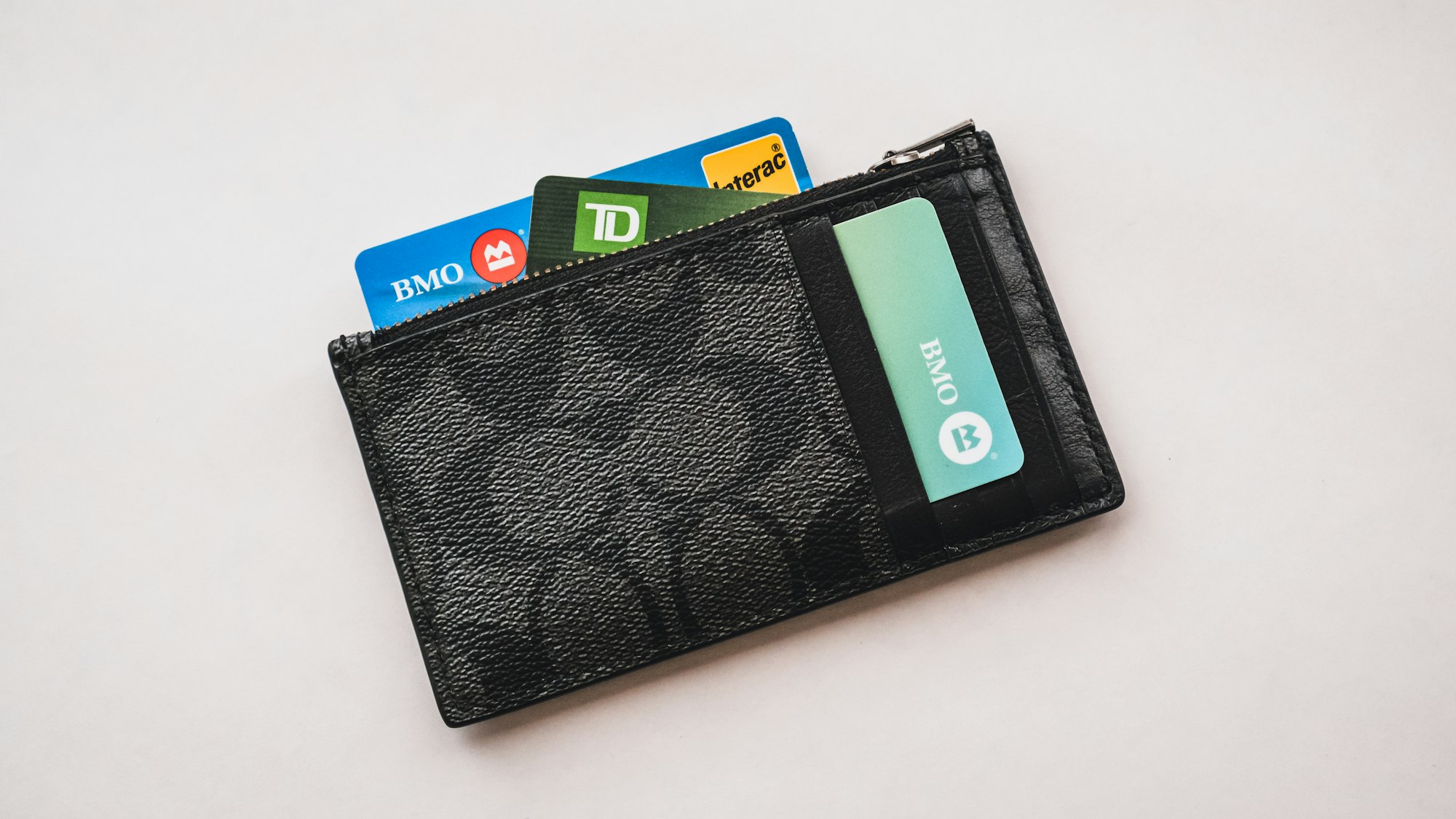Mastering Your Finances: An In-Depth Guide to Dave Ramsey's Baby Steps
Learn about Dave Ramsey’s Baby Steps, a practical guide to financial peace and achieving your money goals.

Are you tired of living paycheck to paycheck? Do you dream of being debt-free and having the financial freedom to live life on your own terms? If so, you're not alone. Millions have turned to Dave Ramsey's Baby Steps to take control of their finances and build a secure future.
Dave Ramsey, a renowned personal finance expert and radio show host, developed the Baby Steps as a straightforward, step-by-step plan to help people get out of debt, save money, and build wealth. His approach has transformed countless lives by providing a clear path to financial peace.
In this comprehensive guide, we'll delve deep into each of the seven Baby Steps, providing practical advice, real-life examples, and motivation to help you on your journey. We'll explore not just the "how," but the "why" behind each step, ensuring you have a thorough understanding of the process. So grab a cup of coffee, get comfortable, and let's embark on a journey that could change your life!
Table of Contents
- Introduction
- Baby Step 1: Save $1,000 for Your Starter Emergency Fund
- Baby Step 2: Pay Off All Debt (Except the House) Using the Debt Snowball
- Baby Step 3: Save 3–6 Months of Expenses in a Fully Funded Emergency Fund
- Baby Step 4: Invest 15% of Your Household Income in Retirement
- Baby Step 5: Save for Your Children's College Fund
- Baby Step 6: Pay Off Your Home Early
- Baby Step 7: Build Wealth and Give
- Conclusion
- Additional Resources
Baby Step 1: Save $1,000 for Your Starter Emergency Fund
An emergency fund turns a crisis into an inconvenience.
Why $1,000?
The first Baby Step is all about creating a financial buffer between you and life's unexpected events. Whether it's a car repair, a medical bill, or a leaky roof, having an emergency fund can prevent you from falling deeper into debt.
But why $1,000? Is that really enough?
The Psychology Behind It
- Achievability: Setting a goal of $1,000 makes it attainable for most people within a short period, providing an immediate sense of accomplishment.
- Momentum: Achieving this first goal quickly helps build momentum and confidence as you move to the next steps.
- Urgency: A smaller goal creates a sense of urgency, encouraging you to make sacrifices and find creative ways to save.
It's a Starter Fund
- Not Comprehensive: This is not your fully funded emergency fund; it's a starter amount to protect you while you're paying off debt.
- Discourages Debt Reliance: With some cash on hand, you're less likely to reach for a credit card when unexpected expenses arise.
How to Save Quickly
Saving $1,000 might seem daunting, but with focus and determination, you can reach this goal faster than you think.
1. Cut Unnecessary Expenses
- Create a Budget: Track your income and expenses to identify where your money is going.
- Cancel Subscriptions: Temporarily eliminate streaming services, gym memberships, or magazine subscriptions you can live without.
- Reduce Utility Bills: Turn off lights when not in use, lower the thermostat, and conserve water.
- Avoid Eating Out: Plan meals and cook at home to save on dining expenses.
2. Increase Your Income
- Side Hustles: Explore opportunities like:
- Ride-Sharing: Drive for Uber or Lyft.
- Delivery Services: Work with DoorDash, Instacart, or Uber Eats.
- Freelancing: Offer services on platforms like Upwork or Fiverr.
- Tutoring: Teach subjects you're proficient in, either in-person or online.
- Overtime and Bonuses: Ask your employer about opportunities for extra hours or performance bonuses.
- Sell Unused Items: Declutter your home and sell items on eBay, Craigslist, or Facebook Marketplace.

3. Automate Your Savings
- Direct Deposit: Have a portion of your paycheck deposited directly into a savings account.
- Round-Up Apps: Use apps that round up your purchases to the nearest dollar and save the difference.
Common Obstacles and Solutions
Obstacle: "I live paycheck to paycheck; there's nothing to cut."
Solution:
- Re-evaluate Your Expenses: Even small cuts add up. Consider generic brands, canceling cable, or reducing your phone plan.
- Increase Income: Focus on side hustles or part-time work temporarily.
Obstacle: "Unexpected expenses keep popping up."
Solution:
- Plan for Irregular Expenses: Include categories in your budget for car maintenance, medical co-pays, or other predictable yet irregular costs.
- Adjust Your Timeline: It might take a bit longer, but stay persistent.
Stay Focused
Remember, this is just the beginning. Keep your eyes on the prize and stay motivated. Celebrate small wins along the way. Every dollar saved brings you one step closer to financial freedom.
Baby Step 2: Pay Off All Debt (Except the House) Using the Debt Snowball

Debt is a thief. It steals your income. It steals your peace of mind.
Now that you have a safety net, it's time to tackle your debts head-on. The Debt Snowball method is a proven strategy to eliminate debt systematically.
Understanding the Debt Snowball Method
1. List Your Debts
Write down all your debts except for your mortgage. This includes:
- Credit Cards
- Student Loans
- Car Loans
- Medical Bills
- Personal Loans
- Store Credit Accounts
Order them from the smallest balance to the largest, regardless of interest rate.
2. Make Minimum Payments on All Debts Except the Smallest
Ensuring you stay current on all your debts is crucial to avoid penalties and additional fees.
3. Attack the Smallest Debt Aggressively
- Focus Your Resources: Any extra money you can find should go toward the smallest debt.
- Sacrifice Temporarily: This might involve cutting entertainment expenses, delaying vacations, or selling items.
- Celebrate Progress: When you pay off a debt, acknowledge your accomplishment.
4. Repeat the Process
- Roll Over Payments: Take the amount you were paying on the paid-off debt and add it to the minimum payment of the next smallest debt.
- Accelerate Your Snowball: With each debt eliminated, your payment amount increases, accelerating the payoff of subsequent debts.
Why Start with the Smallest Debt?
Psychological Wins
- Motivation Boost: Paying off a debt completely provides a sense of achievement.
- Momentum Building: Small victories keep you motivated to continue.
Behavioral Change
- Reinforces Discipline: Sticking to the plan helps establish better financial habits.
- Immediate Results: Seeing quick progress can help alleviate stress and anxiety related to debt.
Debt Snowball vs. Debt Avalanche
Some people prefer the Debt Avalanche method, which focuses on paying off debts with the highest interest rates first. While mathematically it may save on interest, the Debt Snowball method emphasizes behavior modification and motivation, which are critical for long-term success.
Staying Motivated
Visual Aids
- Debt Thermometer: Create a visual representation of your debt reduction progress.
- Debt Payoff Charts: Use spreadsheets or apps to track your progress.
Accountability Partners
- Support Groups: Join online forums or local groups focused on debt reduction.
- Financial Coach: Consider hiring a coach for personalized guidance.
Celebrate Milestones
- Non-Monetary Rewards: Treat yourself to a hike, a day off, or a homemade special meal.
- Share Your Success: Tell friends or family about your achievements (if comfortable).
Real-Life Success Story
Meet Alex and Jamie, a couple who had:
- $15,000 in credit card debt
- $25,000 in student loans
- $10,000 car loan
By adopting the Debt Snowball method:
- They paid off the car loan in 8 months.
- Cleared credit card debt in the next 12 months.
- Finished paying off student loans in 2 more years.
Their total debt payoff journey took just under 4 years. They credit their success to strict budgeting, side hustles (Jamie started freelance graphic design, Alex tutored math), and unwavering commitment to the plan.
Learn more about debt:

Baby Step 3: Save 3–6 Months of Expenses in a Fully Funded Emergency Fund
The only thing that’s certain about life is that it's uncertain.
With your debts (except the mortgage) behind you, it's time to build a more substantial financial safety net.
Calculating Your Emergency Fund
Assess Your Monthly Expenses
Include all necessary expenses:
- Housing: Rent or mortgage, utilities, insurance
- Transportation: Car payments, gas, maintenance
- Food: Groceries, dining (essentials)
- Healthcare: Insurance premiums, medications
- Debt Obligations: Minimum payments (if any remaining)
- Other Essentials: Childcare, basic clothing, communication
Determine the Appropriate Amount
- 3 Months: If you have a stable job, dual-income household, or work in a high-demand field.
- 6 Months: If you have variable income, single-income household, or work in an industry prone to layoffs.
Example Calculation
If your essential monthly expenses total $4,000:
- 3 Months: $12,000
- 6 Months: $24,000
Where to Keep Your Emergency Fund
Your emergency fund should be:
Accessible
- High-Yield Savings Account: Offers better interest rates than traditional savings accounts.
- Money Market Accounts: Typically offer check-writing capabilities and competitive rates.
Separate from Daily Accounts
- Avoid Temptation: Keeping it in a different bank or account reduces the likelihood of dipping into it for non-emergencies.
FDIC Insured
- Safety: Ensure your funds are protected up to $250,000 per depositor, per insured bank.
Adjusting for Inflation and Life Changes
- Review Annually: Recalculate your emergency fund needs as your expenses change due to inflation, lifestyle changes, or family growth.
- Life Events: Marriage, childbirth, or starting a business may necessitate a larger fund.
Tips for Building Your Fund
- Continue Budgeting: Maintain the disciplined spending habits you developed in earlier steps.
- Automate Savings: Set up automatic transfers to your emergency fund account each payday.
- Windfalls: Use tax refunds, bonuses, or monetary gifts to boost your fund.
Peace of Mind
A fully funded emergency fund turns major crises into manageable inconveniences. Whether it's a job loss, medical emergency, or major home repair, you'll have the resources to handle it without going into debt.
Baby Step 4: Invest 15% of Your Household Income in Retirement

Investing is the process of laying out money now to receive more money in the future.
With a solid foundation in place, it's time to focus on building wealth for the future.
Retirement Accounts Explained
401(k) Plans
- Employer-Sponsored: Offered by many employers, sometimes with a company match (free money!).
- Tax Advantages: Contributions are made pre-tax, reducing your taxable income.
- Contribution Limits: For 2023, the limit is $22,500 (or $30,000 if you're over 50).
- Investment Options: Typically limited to funds selected by the plan administrator.
Traditional IRA
- Individual Retirement Account: Opened independently through banks or brokerage firms.
- Tax Deductible Contributions: Reduce your taxable income in the contribution year.
- Taxes on Withdrawals: You'll pay taxes on withdrawals during retirement.
- Contribution Limits: For 2023, up to $6,500 (or $7,500 if you're over 50).
Roth IRA
- After-Tax Contributions: No immediate tax benefit, but withdrawals in retirement are tax-free.
- Income Limits: Eligibility phases out for higher-income earners (single filers over $153,000, married filing jointly over $228,000 for 2023).
- Flexibility: Contributions (not earnings) can be withdrawn penalty-free at any time.
Choosing the Right Investments
Diversify Your Portfolio
- Growth Stock Mutual Funds: Invest in companies expected to grow at an above-average rate.
- International Funds: Exposure to markets outside your home country.
- Aggressive Growth Funds: Higher risk, potentially higher return.
- Balanced Funds: A mix of stocks and bonds for stability.
Consider Risk Tolerance
- Age Factor: Younger investors can typically take more risks; as you near retirement, shifting to more conservative investments is prudent.
- Financial Goals: Align investments with your long-term objectives.
Seek Professional Advice
- Financial Advisors: A fee-only advisor can help tailor a plan to your needs.
- Avoid High Fees: Be cautious of advisors who earn commissions on products they sell.
The Impact of Fees and Taxes
- Expense Ratios: High fees can erode your returns over time. Aim for funds with low expense ratios.
- Tax-Efficient Investing: Consider the tax implications of your investment choices, especially in taxable accounts.
The Power of Compound Interest
Investing consistently over time allows your money to grow exponentially. For example:
- Investing $500/month at 8% annual return:
- 20 Years: Approximately $294,000
- 30 Years: Approximately $745,000
- 40 Years: Over $1.5 million
Stay the Course
- Avoid Emotional Decisions: Don't let market volatility derail your plan.
- Regular Contributions: Consistency is key, even during market downturns.
- Periodic Reviews: Rebalance your portfolio as needed to maintain your desired asset allocation.
Baby Step 5: Save for Your Children's College Fund
An investment in knowledge pays the best interest.
Education can open doors for your children, but it often comes with a hefty price tag. Planning ahead can prevent your kids from being burdened with student loans.
College Savings Options
529 College Savings Plans
- Tax Advantages: Earnings grow tax-free, and withdrawals for qualified education expenses aren't taxed federally (state tax benefits vary).
- High Contribution Limits: Varies by state, often over $300,000.
- Control: Account owner maintains control over funds.
Education Savings Account (ESA)
- Contribution Limit: Up to $2,000 per year per child.
- Tax-Free Growth: Similar to a Roth IRA for education.
- Flexible Use: Can be used for K-12 expenses as well as college.
Custodial Accounts (UTMA/UGMA)
- Ownership: Assets are held in the child's name and transfer to them at the age of majority.
- No Usage Restrictions: Funds aren't limited to education expenses.
- Tax Implications: May have tax benefits but can impact financial aid eligibility.
Balancing Retirement and College Savings
- Prioritize Retirement: Ensure you're on track with your retirement savings before allocating funds to college savings.
- Set Clear Boundaries: Decide how much you can contribute without compromising your financial security.
Encouraging Scholarships and Grants
- Academic Achievement: Encourage good grades and test scores to qualify for merit-based scholarships.
- Extracurricular Activities: Participation in sports, arts, or volunteer work can open doors to additional funding.
- Financial Aid: Fill out the FAFSA (Free Application for Federal Student Aid) to determine eligibility for federal aid.
Involving Your Children
- Teach Financial Responsibility: Educate them about the costs of education and involve them in the savings process.
- Part-Time Work: Encourage them to work during summers or part-time to contribute.
- Community College and Transfers: Starting at a community college can significantly reduce costs.
Baby Step 6: Pay Off Your Home Early
Imagine life with no mortgage. What could you do?
Paying off your home mortgage early frees up a significant portion of your income and provides an unparalleled sense of security.
Strategies for Paying Off Your Mortgage
1. Bi-Weekly Payments
- How It Works: Make half your mortgage payment every two weeks.
- Benefit: You'll make 26 half-payments, equating to 13 full payments per year, thus making an extra payment annually.
- Considerations: Ensure your lender credits the payments correctly.
2. Extra Principal Payments
- Round Up Payments: If your payment is $950, pay $1,000.
- Lump Sum Payments: Apply bonuses, tax refunds, or windfalls directly to the principal.
- Specify Application: Clearly indicate that extra payments should go toward the principal.
3. Refinance to a Shorter Term
- Lower Interest Rates: Shorter-term loans often have lower rates.
- Accelerated Payoff: Switching from a 30-year to a 15-year mortgage significantly reduces the payoff time.
- Costs: Be aware of closing costs and fees associated with refinancing.
4. Avoid New Debt
- No HELOCs: Steer clear of home equity lines of credit that increase your mortgage balance.
- No Cash-Out Refinancing: Resist the temptation to take equity out of your home for other expenses.
Benefits of Being Mortgage-Free
- Financial Freedom: Eliminate your largest monthly expense.
- Reduced Stress: Security in owning your home outright.
- Increased Cash Flow: Redirect funds to investments, savings, or lifestyle improvements.
- Equity Building: Full ownership enhances your net worth.
Considerations Before Paying Off Early
- Opportunity Cost: Could extra payments yield a higher return if invested elsewhere?
- Liquidity: Ensure you maintain adequate cash reserves and don't deplete emergency funds.
- Interest Rates: If you have a low-interest mortgage, the urgency to pay off may be less.
Tax Implications
- Mortgage Interest Deduction: Assess how losing this deduction may impact your taxes.
- Consult a Tax Professional: Understand the broader implications on your financial situation.
Stay Disciplined
Avoid the temptation to upgrade your home or take on new debts. Focus on your goal of being mortgage-free.
Learn More:

Baby Step 7: Build Wealth and Give

Live like no one else now, so you can live and give like no one else later.
Congratulations! You've reached the final Baby Step. With no debt and a fully funded retirement, you can focus on building wealth and giving generously.
Investing Beyond Retirement
Diversify Your Investments
- Real Estate: Consider rental properties, commercial real estate, or REITs.
- Stock Market: Invest in individual stocks, index funds, or ETFs for diversification.
- Bonds and Fixed Income: Provide stability and income.
- Alternative Investments: Explore options like commodities, private equity, or hedge funds (ensure you understand the risks).
Passive Income Streams
- Dividend Stocks: Invest in companies that pay regular dividends.
- Royalties: Earn from creative works if you're an artist or writer.
- Business Investments: Fund startups or existing businesses as a silent partner.
Work with Professionals
- Financial Planners: Create a comprehensive wealth management plan.
- Tax Advisors: Optimize your tax strategy to retain more wealth.
- Estate Planners: Ensure your assets are protected and your wishes are honored.
The Joy of Generosity
Charitable Giving
- Tithing: Support your religious community as per your beliefs.
- Philanthropy: Donate to causes you're passionate about, such as education, healthcare, or environmental conservation.
- Charitable Funds: Set up donor-advised funds or charitable trusts for long-term giving.
Helping Others
- Family Support: Assist family members with education, starting a business, or purchasing a home.
- Community Projects: Fund local initiatives like parks, libraries, or scholarships.
- Volunteering: Offer your time, skills, and expertise to organizations in need.
Protecting Your Wealth
Insurance
- Umbrella Policies: Provide additional liability coverage beyond standard policies.
- Long-Term Care Insurance: Protect assets in case of extended medical care needs.
Legal Protection
- Trusts: Safeguard assets and provide for heirs according to your wishes.
- Wills and Estate Planning: Regularly update legal documents to reflect your current situation.
Risk Management
- Diversification: Don't put all your eggs in one basket.
- Regular Reviews: Periodically assess your investment portfolio and make adjustments as needed.
Legacy Planning
- Education: Impart financial knowledge to your children and grandchildren.
- Ethical Will: Share your values, life lessons, and hopes for future generations.
- Philanthropic Legacy: Consider establishing a foundation or endowment.
Living Your Dreams
With financial burdens lifted, you can pursue passions like:
- Traveling the World
- Starting a New Business or Hobby
- Pursuing Further Education
- Spending Quality Time with Loved Ones
You've earned the freedom to live life on your terms.
Conclusion
Embarking on Dave Ramsey's Baby Steps is more than just following a financial plan—it's committing to a lifestyle change that prioritizes financial health, responsibility, and generosity. While the journey may have challenges, the rewards are immeasurable.
By:
- Saving for emergencies, you protect yourself from unforeseen setbacks.
- Eliminating debt, you reclaim your income and reduce stress.
- Investing wisely, you secure a comfortable future.
- Giving generously, you make a positive impact on others.
Remember, every big journey starts with a single step. Stay disciplined, stay motivated, and don't hesitate to seek support from like-minded individuals or financial professionals.
Your path to financial peace is within reach. Take that first Baby Step today!
Additional Resources
- "The Total Money Makeover" by Dave Ramsey: A practical guide to the Baby Steps with real-life success stories. Dive into it here.
- "Financial Peace Revisited" by Dave Ramsey: Insights on how to achieve financial peace. Check it out here.
- "The Legacy Journey" by Dave Ramsey: Learn how to build wealth and leave a lasting legacy. Explore it here.
- Dave Ramsey's Website: Access tools, articles, and community forums at DaveRamsey.com.
- Financial Calculators: Use online calculators to plan your debt payoff and retirement savings.
- Budgeting Apps: Consider apps like EveryDollar or Mint to track your spending and stay on budget.




